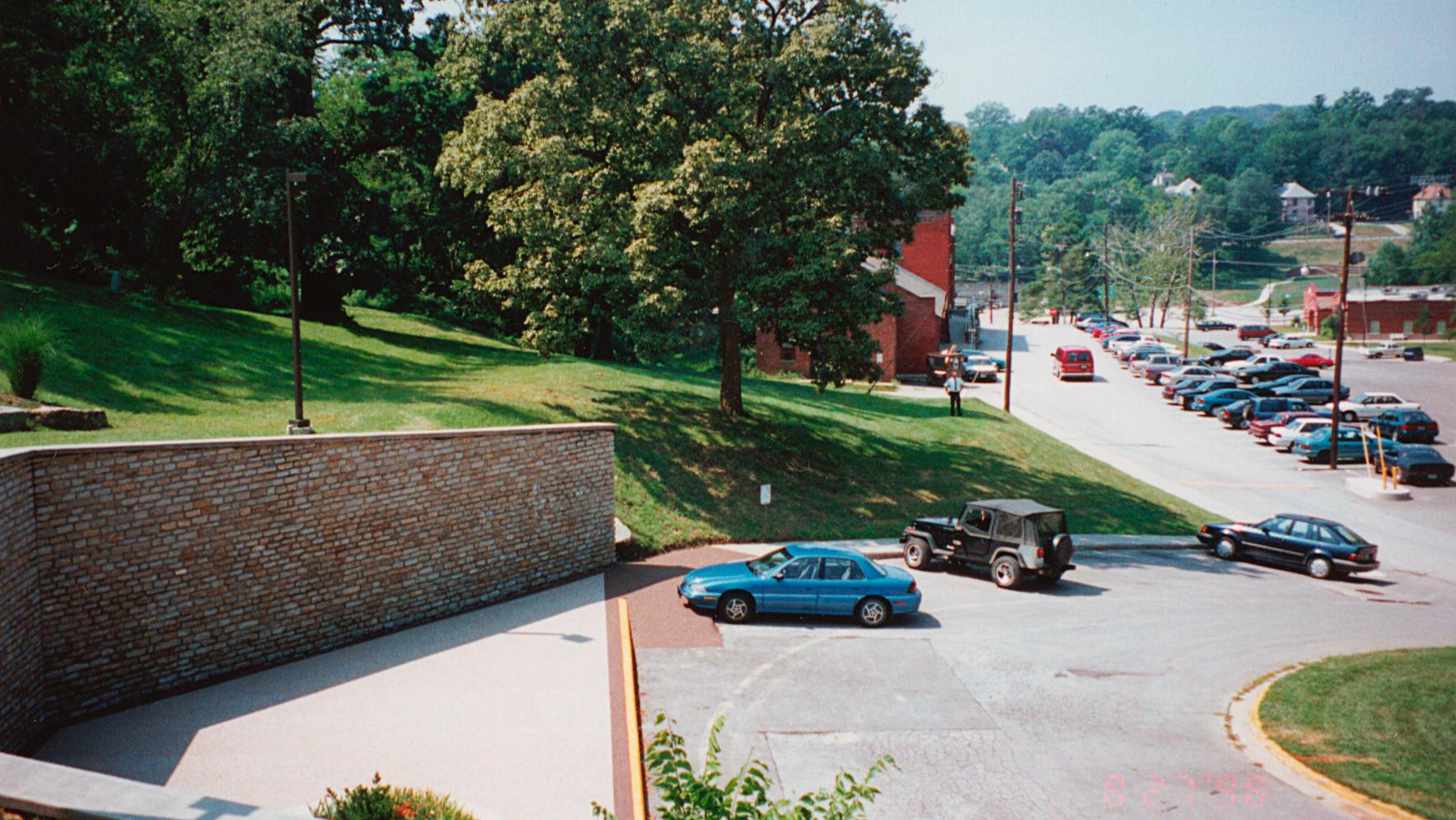Sports Center for Underground College
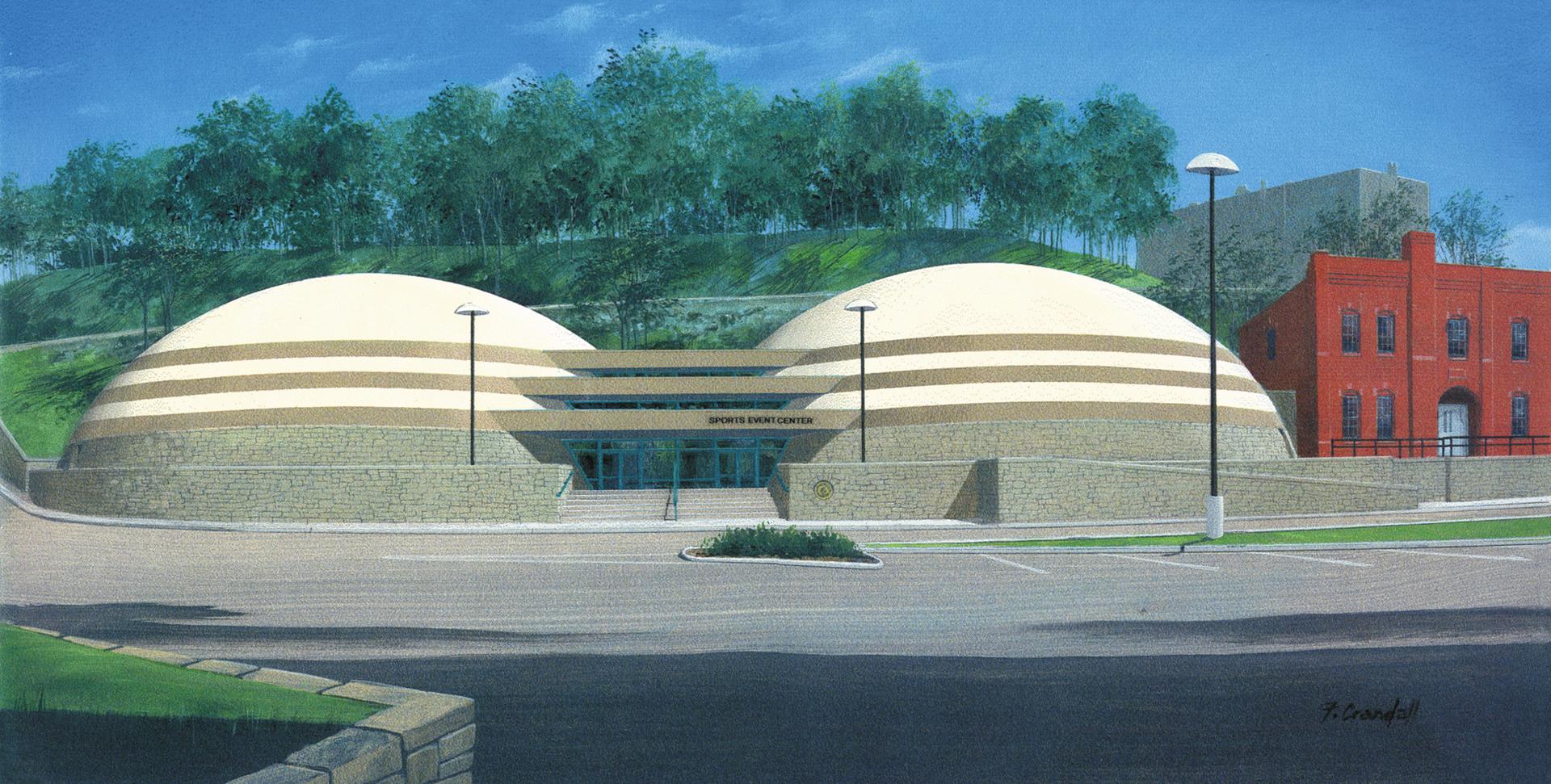
Park College is currently expanding its campus with twin Monolithic Domes. The Sports Event Center will have direct access to the existing underground campus, but will be built at ground level due to lack of space in the underground mined facilities
Built among bluffs and wooded hills, Park College overlooks the Missouri River. That, in itself, is not unusual. But buildings constructed largely of limestone mined from below the campus is, and that’s just what Park College has at its home campus.
Other factors contribute to its uniqueness: Park College has one of the most extensive underground campuses of any school in the world. Underground student facilities, carved from solid limestone, include a 48,000-square-foot library and learning center, a bookstore, computer lab, classrooms, the Campanella Gallery, the Morden Board Room, college offices, and a health clinic. The temperature in this developed area steadily holds at a comfortable 70 to 72 degrees Fahrenheit.
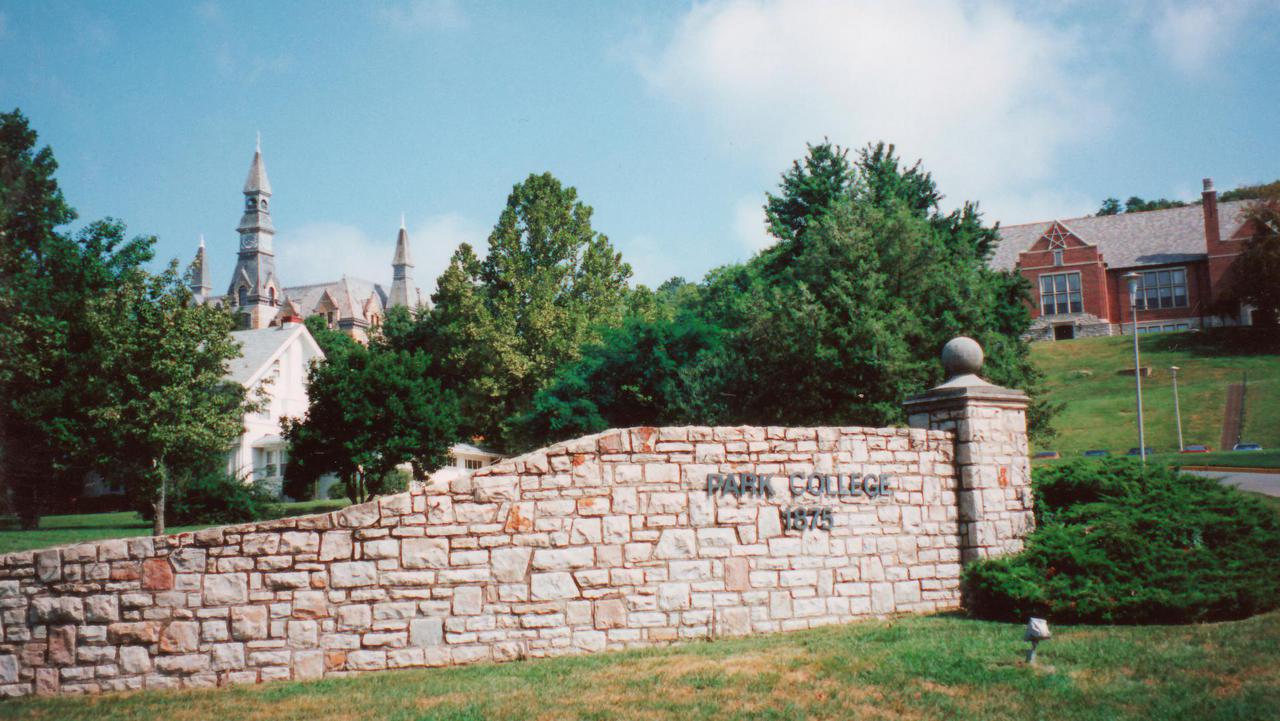
Established in 1875, Park College began with above-ground structures and later expanded underground.
In addition, Park College is developing its Parkville Commercial Underground (PCU). Located just 20 minutes from downtown Kansas City, PCU is the only underground business complex in the county. When fully developed, PCU will encompass 24 million square feet of subsurface development for businesses, including retail outlets, warehousing, light manufacturing, and office operations.
New Sports Event Center
Adding to this uniqueness is Park College’s most recent project—a $3 million dollar Sports Event Center, consisting of twin Monolithic Domes with diameters of 130-feet each, flanking a two-story office building of 3,289 square feet.
President Breckon says, “At the present time, we have an old, outdated and too small gymnasium that only seats 200. We’ve torn away a swimming pool wing, and we’re going to build a dome to house our new gymnasium, with seating for 1000 spectators. Its twin will function as a field house for indoor practice of soccer, baseball, softball, tennis, and golf. The office complex between the domes will have snack bars, press boxes—all the usual stuff you put in a recreational facility.”
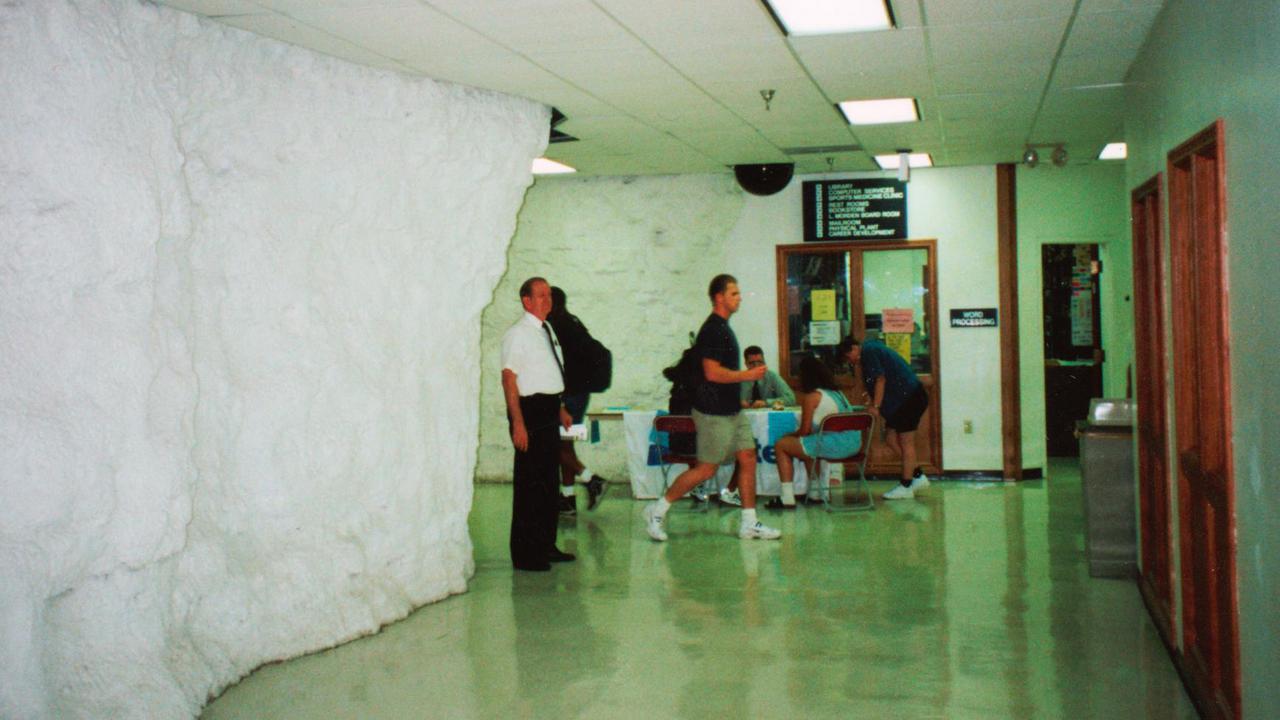
A peek underground at existing classrooms and offices. Students and faculty appreciate the steady 72 degrees the underground facility provides.
Intercollegiate sports, especially basketball and volleyball, are very popular at Park College, particularly since some of its teams have attained national ranking. Consequently, a new gymnasium, one that was not only functional and practical, but attractive, quickly became a goal.
Claude English, Athletic Director at Park College, says, “We have twelve sports teams here, using the gym for practice, games, and intramural purposes. In the last decade, our men’s and women’s soccer have been very, very successful. Our basketball has become nationally known in recent years. The men’s and women’s volleyball teams are doing extremely well, and our women’s basketball team is really making strides on the national scene.
"We will be doing all of that in the new gym, and we are all absolutely ecstatic about it,” English says.
Going Monolithic
According to administrators at Park College, the decision to go with Monolithic Domes for their new Sports Event Center involved several factors and included lots of research, but was not really a difficult one. Breckon says that they began looking for structures that would provide some of the same benefits they already enjoyed with what they had, such as comfortable, consistent indoor temperatures, structural strength and stability, and low maintenance. Research quickly eliminated traditional structures because a traditional design simply could not provide the space and the features Park College wanted and still fit its budget. So they began investigating domes.
“Park College is unique,” says Breckon. “We have the underground, we have all those limestone buildings, and we already have a dome on the front part of the campus. So it’s not like we were strangers to the dome concept.”
Dr. Paul Rounds, Executive Vice President for Administration, says, “We looked at what I call inflatable domes that were hung by tension wires. Those tension wires are temporary and have to be replaced every fifteen years. We just couldn’t get comfortable with that. Then our athletic director brought us information on Monolithic Domes.”
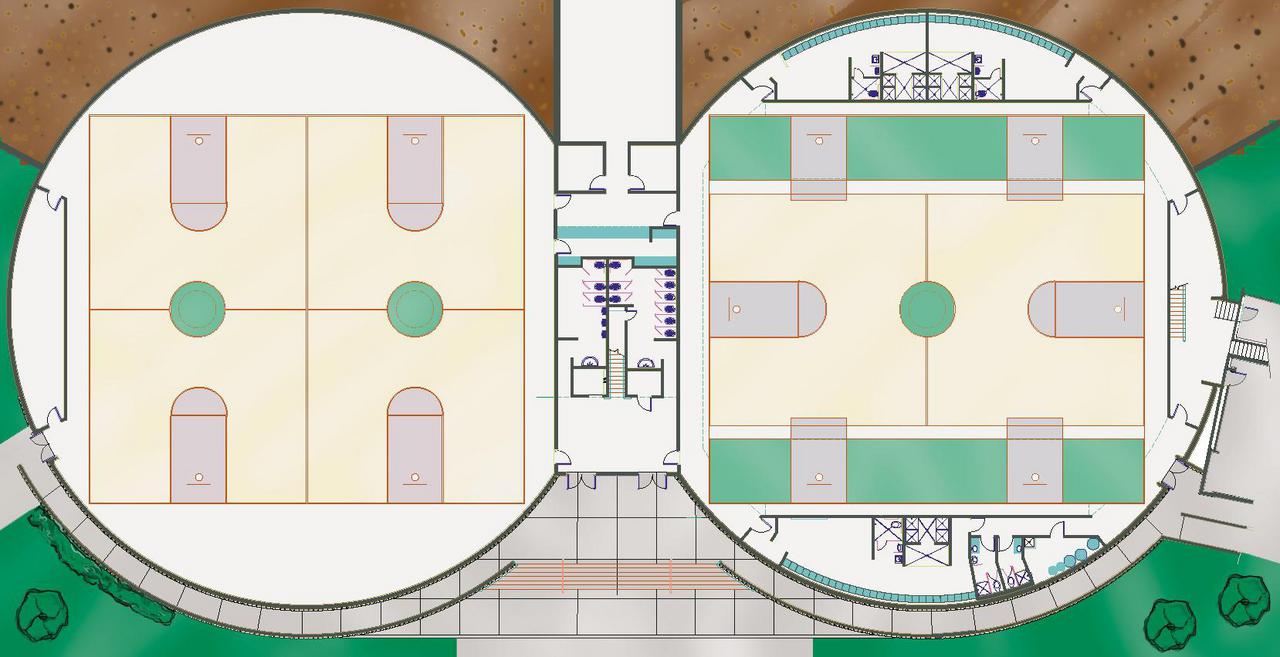
Interior floor plan of the Sports Event Center. An office complex separates the two gymnasiums. One gym contains two practice courts and the other a competition court with seating for 1,000 spectators.
Claude English recalls that meeting. “Once we looked into all the features and the longevity of the Monolithic Dome, I don’t think it had any competitors. Then we actually went to some completed school sites and liked what we saw.”
“It all boiled down to this,” Rounds adds. “We found that by using the dome approach, we would end up with essentially twice as much space for the same amount of money. We could get two domes—two playing surfaces plus all the features we wanted—for the price of one playing surface.
But for Athletic Director English, yet another factor was equally important. "My coaches and I like the building time. Normally, we’d be looking at about a year and a half for a project like this. The domes will take about a third of that, with tentative completion scheduled for October or November 1999—just in time for basketball.”
Reprinted from the Spring/Summer 1999 issue of the Roundup: Journal of the Monolithic Dome Institute
